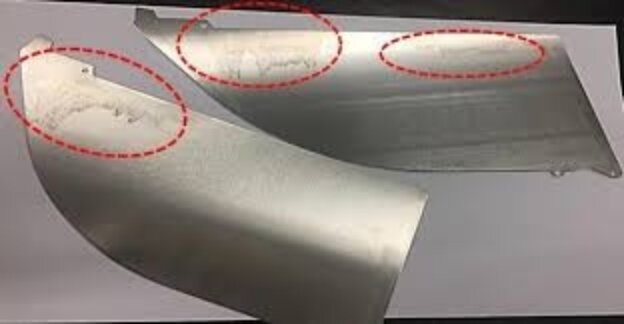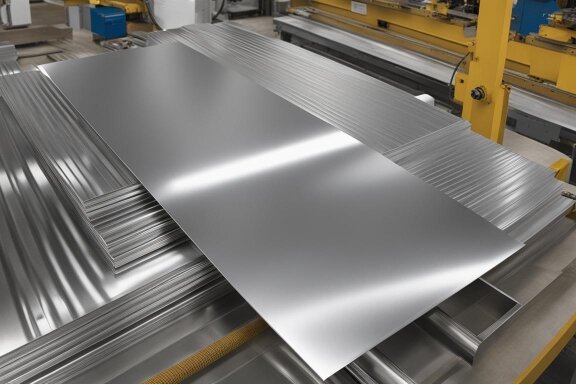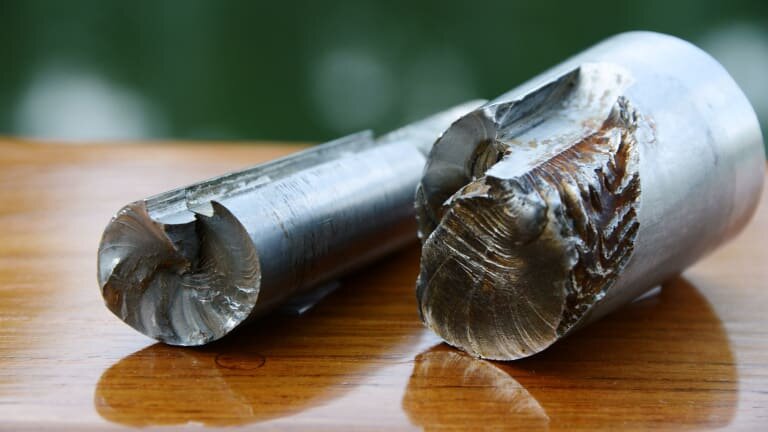Are you looking for a way to improve the durability and appearance of metal parts? Do you want a coating method that saves time and reduces waste? Electrostatic painting offers a way to fix these issues. This process provides better adhesion, a smooth finish, and cost savings. Its efficiency and durability make it a preferred choice for manufacturers seeking reliable coating solutions.
This method saves time and money compared to conventional painting, and the finish lasts much longer. Let’s explore how this process works and why it can benefit your business.
What Is Electrostatic Painting?
Electrostatic painting is a process where paint particles are charged and then attracted to a grounded surface. The basic principle of electrostatic painting relies on the attraction between opposites. The paint particles are positively charged, while the painted object is negatively charged.
This attraction helps the paint stick to the surface, creating a smooth, uniform finish with minimal overspray. The process is most commonly used in industries like automotive and metal fabrication.
Key Components of Electrostatic Painting
Understanding the key components of electrostatic painting is crucial for making the most of this technique. Let’s break down the essential elements that drive the process and ensure its effectiveness.
The Electrostatic Charge Mechanism
At the heart of electrostatic painting is the electrostatic charge mechanism. Paint particles are electrically charged as they leave the spray gun, typically with a positive charge. The object to be painted is given a negative charge. This creates an attraction between the paint particles and the object, ensuring they adhere to the surface rather than being dispersed in the air.
Equipment Needed for Electrostatic Painting
To get started with electrostatic painting, you’ll need the right tools. Here’s a breakdown of the essential equipment:
Spray Gun
The spray gun is used to apply the paint to the surface. It has an electrode that charges the paint particles as they exit the nozzle. The weapon controls the even distribution of paint over the entire surface.
Power Supply Unit
The power supply unit generates the necessary electrical charge. It controls the voltage used to charge the paint particles and the workpiece. The power supply ensures the correct charge is applied for optimal adhesion between the paint and the surface.
Air Compressor
An air compressor atomises the paint and sprays it onto the surface. It helps create a fine mist of paint particles, making it easier for them to adhere to the object.
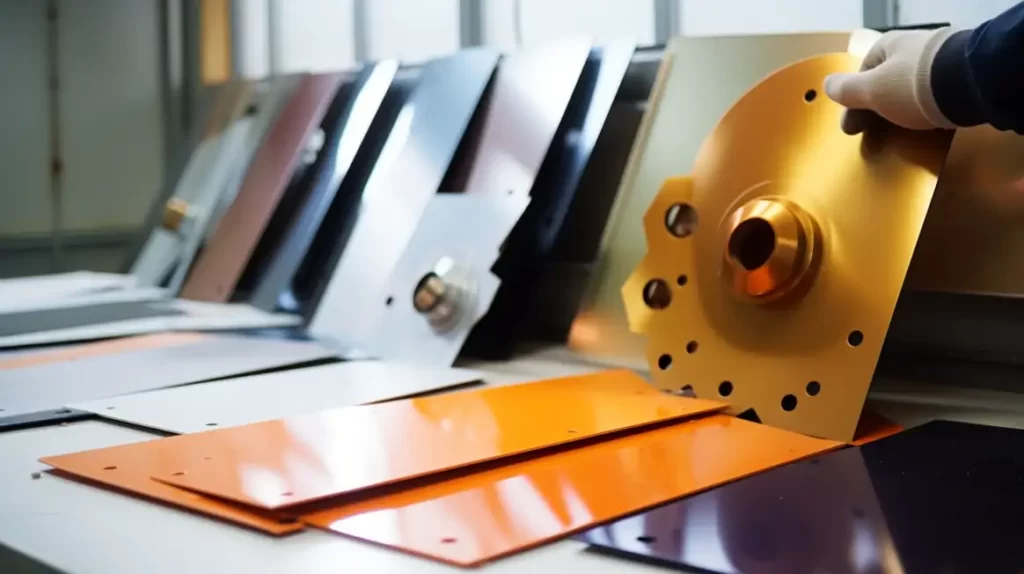
The Electrostatic Painting Process
Electrostatic painting involves a series of steps to ensure a high-quality finish. Let’s walk through each stage of the process.
Step 1: Preparation of the Surface
Before painting, the surface must be clean and ready. Here’s what you need to do:
- Clean the Surface: Remove dirt, oil, and rust using solvents or abrasives.
- Pre-Treat the Surface: Apply a primer or chemical treatment to improve paint adhesion.
- Ground the Object: Ensure the object is properly grounded to attract the charged paint particles.
Step 2: Charging the Paint
Next, the paint is charged to create an electrostatic effect. Here’s how it works:
- Load the Paint: Fill the spray gun with the chosen paint or powder coating.
- Charge the Particles: As the paint passes through the gun, an electrode gives it a negative charge.
Step 3: Applying the Paint
Now, it’s time to apply the paint. Here’s what happens:
- Spray the Paint: Use the spray gun to apply the charged paint to the surface. The electrostatic effect helps the paint stick evenly, even on complex shapes.
- Control the Application: Adjust the spray pattern and pressure for consistent coverage.
Step 4: Curing the Coating
The final step is curing the paint to make it durable. Here’s how it’s done:
- Heat the Coating: Place the painted object in an oven or use infrared heat to cure the paint. This process hardens the coating and makes it resistant to wear and tear.
- Cool and Inspect: Once cured, let the object cool and check for imperfections.
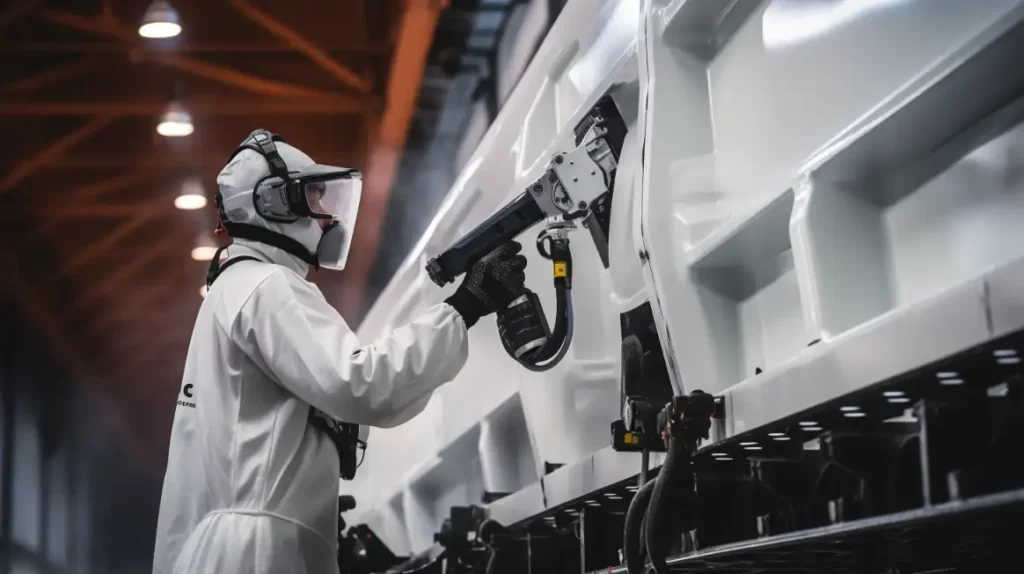
Benefits of Electrostatic Painting
Electrostatic painting offers several advantages, making it a top choice for many industries. Let’s explore the key benefits.
Superior Coverage and Finish
Electrostatic painting delivers exceptional coverage and finish. The charged paint particles stick uniformly to the surface, even on complex shapes or hard-to-reach areas. This reduces the chances of streaks, drips, or uneven areas.
Cost-Effectiveness
Electrostatic painting can be more cost-effective in the long run. It reduces paint waste by minimizing overspray, meaning less material is used to cover the same area. The process is also quicker, which reduces labour costs and boosts production efficiency.
Environmental Impact: A Greener Choice
It produces less waste than traditional spray painting, reducing the amount of paint released into the air. Fewer chemicals and solvents are used, making it safer for both the environment and workers.
Time Efficiency
Electrostatic painting is faster than traditional painting methods. The process is quicker because it requires fewer coats to achieve the desired finish.
How does Electrostatic Painting differ from Traditional Painting?
Electrostatic and traditional painting are used to coat surfaces, but they work in very different ways. Let’s compare the two methods to see what sets them apart.
| Feature | Electrostatic Paint | Traditional Paint |
|---|---|---|
| Application Method | Uses an electric charge to attract paint to the surface. | Relies on brushes, rollers, or spray guns to apply paint. |
| Coverage Efficiency | Ensures consistent coverage, even in complex shapes or tight areas. | Can leave gaps or uneven areas that may need additional coats. |
| Overspray | Minimal overspray, with most of the paint staying on the surface. | Often results in significant overspray, wasting paint and creating mess. |
| Finish Quality | Delivers a smooth, even, and durable finish. | The finish quality may vary based on the method and tools used. |
| Material Waste | Lower paint waste due to the precise application. | Higher paint waste due to overspray and excessive coverage. |
Applications of Electrostatic Painting
Electrostatic painting is used across various industries, offering durable, high-quality finishes. Here are some of its most common applications:
Automotive Industry
The automotive industry relies heavily on electrostatic painting for its precision and durability. Here’s how it’s used:
- Car Parts: Frames, wheels, and engine components are often coated using this method.
- Durability: The tough finish resists scratches, chips, and corrosion, which is crucial for vehicles.
- Aesthetic Appeal: The smooth, even coating enhances the visual quality of automotive parts.
Household Appliances
Electrostatic painting is also typical in the production of household appliances. Here’s why:
- Refrigerators and Ovens: These appliances need durable, easy-to-clean surfaces.
- Washing Machines and Dryers: The coating protects against rust and wear.
- Uniform Finish: The process ensures a consistent look, which is essential for consumer products.
Industrial Equipment
Industrial equipment often faces harsh conditions, making electrostatic painting a perfect fit. Here’s how it’s applied:
- Machinery and Tools: The durable coating protects against wear and tear.
- Metal Enclosures: Electrical boxes and control panels benefit from the corrosion-resistant finish.
- Complex Shapes: The electrostatic process ensures even coverage on intricate parts.
Architectural and Decorative Items
Electrostatic painting isn’t just for industrial use but also for architectural and decorative purposes. Here’s how:
- Metal Furniture: Chairs, tables, and shelving get a smooth, durable finish.
- Light Fixtures: The coating enhances both appearance and longevity.
- Decorative Metalwork: Gates, railings, and sculptures benefit from the even, high-quality coating.
Best Practices in Electrostatic Painting
To achieve the best results with electrostatic painting, it’s essential to follow certain best practices. These practices ensure an even, durable finish and help maximize the process’s efficiency.
Proper Surface Preparation
Before applying paint, ensure the surface is clean and free of dirt, oil, or other contaminants. Prepare the surface using abrasive blasting, power washing, or chemical cleaners.
Ensure Proper Charge Settings
Make sure the spray gun and power supply are set to the correct voltage for the type of paint and object being coated. The paint may not adhere properly if the charge is too low, leading to poor coverage.
Maintain a Consistent Spray Pattern
When applying the paint, keep the spray gun consistently from the surface, typically around 6 to 8 inches. Move the gun in smooth, overlapping strokes to ensure complete coverage without excessive buildup or thin spots.
Use Quality Materials
Use high-quality paint that is compatible with the electrostatic process. The type of paint will influence the finish, durability, and ease of application. Work with paints designed explicitly for electrostatic systems to ensure a smoother, more consistent coating.
Conclusion
Electrostatic painting is an efficient way to apply coatings to metal surfaces. It uses an electric charge to make the paint stick evenly, which helps reduce overspray and creates a smooth, long-lasting finish. It’s an excellent choice for businesses looking for high-quality, eco-friendly solutions.
Ready to learn more or start your next project with electrostatic painting? Contact us today for a consultation!
Hey, I'm Kevin Lee

For the past 10 years, I’ve been immersed in various forms of sheet metal fabrication, sharing cool insights here from my experiences across diverse workshops.
Get in touch

Kevin Lee
I have over ten years of professional experience in sheet metal fabrication, specializing in laser cutting, bending, welding, and surface treatment techniques. As the Technical Director at Shengen, I am committed to solving complex manufacturing challenges and driving innovation and quality in each project.


